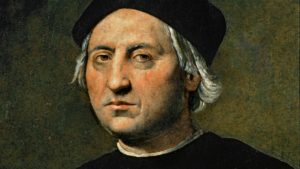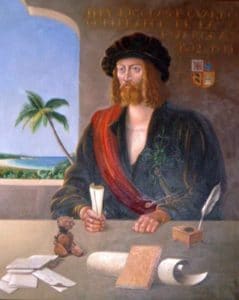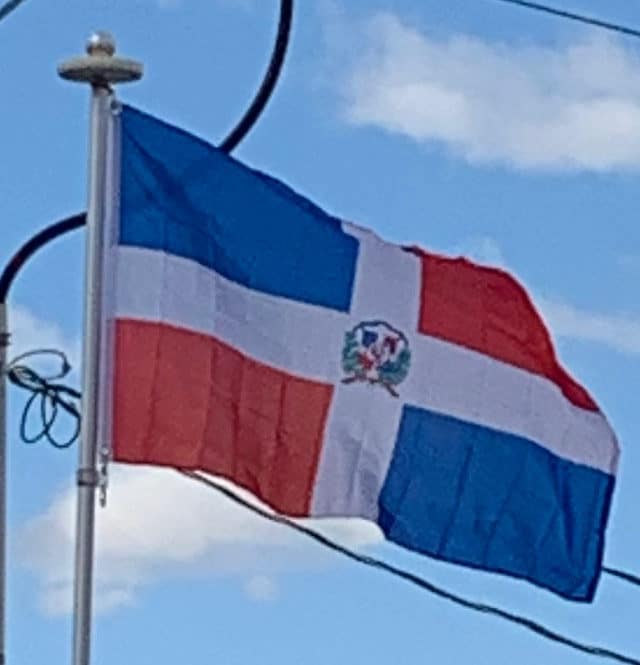The first recorded smallpox outbreak in the Americas occurred on Hispaniola in 1507. The last record of pure Taínos in the country was from 1864. Still, Taíno biological heritage survived to an important extent, due to intermixing. Census records from 1514 reveal that 40% of Spanish men in Santo Domingo were married to Taino women, and some present-day Dominicans have Taíno ancestry. Remnants of the Taino culture include their cave paintings, (including the Pomier Caves) as well as pottery designs which are still used in the small artisan village of Higüerito, Moca.
European Colonization:
Christopher Columbus arrived on the island on December 5, 1492, during the first of his four voyages to the Americas. He claimed the land for Spain and named it La Española due to its diverse climate and terrain which reminded him of the Spanish landscape. Traveling further east Columbus came across the Yaque del Norte River in the Cibao region, which he named Rio de Oro after discovering gold deposits nearby. On Columbus’s return during his second voyage he established the settlement of La Isabela in what is now Puerto Plata on Jan. 1494, while he sent Alonso de Ojeda to search for gold in the region.

In 1496 Bartholomew Columbus, Christopher’s brother, built the city of Santo Domingo, Western Europe’s first permanent settlement in the “New World.” The colony thus became the springboard for the further Spanish conquest of the Americas and for decades the headquarters of Spanish colonial power in the hemisphere. Soon after the largest discovery of gold in the island was made in the cordillera central region, which led to a mining boom. By 1501, Columbus’s cousin Giovanni Columbus, had also discovered gold near Buenaventura, the deposits were later known as Minas Nuevas. Two major mining areas resulted, one along San Cristóbal-Buenaventura, and another in Cibao within the La Vega-Cotuy-Bonao triangle, while Santiago de los Caballeros, Concepcion, and Bonao became mining towns. The gold rush of 1500–1508 ensued. Ferdinand II of Aragon “ordered gold from the richest mines reserved for the Crown.” Thus, Ovando expropriated the gold mines of Miguel Diaz and Francisco de Garay in 1504, as pit mines became royal mines, though placers were open to private prospectors. Furthermore, Ferdinand wanted the “best Indians” working his royal mines, and kept 967 in the San Cristóbal mining area supervised by salaried miners.

Under Nicolás de Ovando y Cáceres’ governorship, the Indians were made to work in the gold mines, “where they were grossly overworked, mistreated, and underfed,” according to Pons. By 1503, the Spanish Crown legalized the distribution of Indians to work the mines as part of the encomienda system. According to Pons, “Once the Indians entered the mines, hunger and disease literally wiped them out.” By 1508 the Indian population of about 400,000 was reduced to 60,000, and by 1514, only 26,334 remained. About half were located in the mining towns of Concepción, Santiago, Santo Domingo, and Buenaventura. The repartimiento of 1514 accelerated emigration of the Spanish colonists, coupled with the exhaustion of the mines. In 1516, a smallpox epidemic killed an additional 8,000, of the remaining 11,000 Indians, in one month. By 1519, according to Pons, “Both the gold economy and the Indian population became extinct at the same time.”
